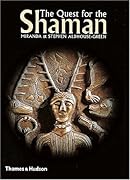<< Our Photo Pages >> Culbone Stone - Early Christian Sculptured Stone in England in Somerset
Submitted by TimPrevett on Saturday, 25 May 2013 Page Views: 18933
Early Medieval (Dark Age)Site Name: Culbone StoneCountry: England County: Somerset Type: Early Christian Sculptured Stone
Nearest Town: Porlock Nearest Village: West Porlock
Map Ref: SS8321047374 Landranger Map Number: 181
Latitude: 51.213588N Longitude: 3.673468W
Condition:
| 5 | Perfect |
| 4 | Almost Perfect |
| 3 | Reasonable but with some damage |
| 2 | Ruined but still recognisable as an ancient site |
| 1 | Pretty much destroyed, possibly visible as crop marks |
| 0 | No data. |
| -1 | Completely destroyed |
| 5 | Superb |
| 4 | Good |
| 3 | Ordinary |
| 2 | Not Good |
| 1 | Awful |
| 0 | No data. |
| 5 | Can be driven to, probably with disabled access |
| 4 | Short walk on a footpath |
| 3 | Requiring a bit more of a walk |
| 2 | A long walk |
| 1 | In the middle of nowhere, a nightmare to find |
| 0 | No data. |
| 5 | co-ordinates taken by GPS or official recorded co-ordinates |
| 4 | co-ordinates scaled from a detailed map |
| 3 | co-ordinates scaled from a bad map |
| 2 | co-ordinates of the nearest village |
| 1 | co-ordinates of the nearest town |
| 0 | no data |
Internal Links:
External Links:
I have visited· I would like to visit
lichen would like to visit
bishop_pam visited on 28th Apr 2019 - their rating: Cond: 4 Amb: 5 Access: 4
lucasn visited on 20th Aug 2018 - their rating: Cond: 3 Amb: 3 Access: 3
SandyG visited on 25th Apr 2018 - their rating: Cond: 4 Amb: 4 Access: 4 Limited car parking is available at SS 83350 47223.
Average ratings for this site from all visit loggers: Condition: 3.67 Ambience: 4 Access: 3.67

The information board says: "The Culbone Stone is an early medieaval standing stone approximately one meter in height, which was discovered in 1940. It lies in woodland close to the parish boundary, and features an incised wheeled cross, the style of which suggests it dates from 7th to 9th century. The stone is legally protected as a scheduled ancient monument. It is situated on private land over which there is no right of way but the owner has given permission for members of the public to visit the area in order to visit the stone provided they do so entirely at their own risk. Please keep to the marked path."
Tim P writes: Well, some of this visit was most bizarre. We pulled up in thick fog, I got out of the car with my gear, following the path marked towards the stone. The path is easy and clear to follow, going through very low, dense trees either side. When I reached the Culbone Stone, set in a tiny clearing, the sun was beating down, just 5 minutes later! Given heavy rain the previous night, and then sudden hot sunshine, much of the wood was shrouded in evaporating water.
The stone was a little overshadowed by a fallen tree, its enormous root ball, and a black gaping pit, and the other strange thing which uneased me most, was the complete lack of buzzing insects and birdsong. I was in the wood for half an hour in glorious sunshine, and do not recall encountering any other life apart from the trees, grass and plants. Call Mulder and Scully, I say! The Culbone Stone is quite a curious little thing. The information says it dates from circa 7th century AD, but I half wonder if it was an attempt at the Christianisation of a Pagan monument, as it is literally 60 feet from the stone row? I do not by what criteria it was dated, but I think it's perhaps an idea to bear in mind.
For more information see Historic England List ID 1006141 and Pastscape Monument No. 35920. Please note this stone is located on
private land. Comment below by Philip Glastonbury:
Note: "The Culbone Stone took ages to find, but it was worth it. The wood has an odd atmosphere, and the stone - when you eventually find it - seems to be waiting for you."
You may be viewing yesterday's version of this page. To see the most up to date information please register for a free account.




Do not use the above information on other web sites or publications without permission of the contributor.
Click here to see more info for this site
Nearby sites
Key: Red: member's photo, Blue: 3rd party photo, Yellow: other image, Green: no photo - please go there and take one, Grey: site destroyed
Download sites to:
KML (Google Earth)
GPX (GPS waypoints)
CSV (Garmin/Navman)
CSV (Excel)
To unlock full downloads you need to sign up as a Contributory Member. Otherwise downloads are limited to 50 sites.
Turn off the page maps and other distractions
Nearby sites listing. In the following links * = Image available
219m E 87° Culbone Hill* Stone Row / Alignment (SS83434738)
1.8km SE 138° Porlock Common North East* Stone Row / Alignment (SS8434946032)
2.4km ESE 117° Whit Stones* Standing Stones (SS8532846255)
2.8km SSE 162° Porlock Allotment NE* Standing Stones (SS84014471)
3.0km SSE 153° Porlock Circle* Stone Circle (SS84514467)
3.0km SSE 152° Porlock Common SW* Multiple Stone Rows / Avenue (SS8457544654)
3.1km SSE 163° Coley Water, South* Stone Row / Alignment (SS84074438)
3.3km S 182° Hoscombe NW Standing Stones (SS830441)
3.5km WNW 285° Yenworthy* Standing Stones (SS7987948366)
3.5km S 180° Hoscombe SE* Stone Row / Alignment (SS8311443876)
3.6km S 176° Porlock Allotment SW* Multiple Stone Rows / Avenue (SS8335543785)
3.6km SE 131° Berry Castle (Exmoor) Hillfort (SS859449)
3.7km SSW 197° Kittuck* Multiple Stone Rows / Avenue (SS8203443885)
4.3km WNW 293° Sister's Fountain* Holy Well or Sacred Spring (SS7927749161)
4.8km S 181° Madacombe Barrows Barrow Cemetery (SS830426)
4.9km S 180° Madacombe* Stone Row / Alignment (SS831425)
5.1km SW 215° Toms Hill* Multiple Stone Rows / Avenue (SS80184329)
5.1km S 173° Alderman's Barrow* Round Barrow(s) (SS837423)
5.3km WSW 237° Badgworthy Lees Stone Row / Alignment (SS78724456)
5.4km SW 236° Hoccombe Coombe* Multiple Stone Rows / Avenue (SS7866444434)
5.4km SSW 208° Swap Hill (N)* Standing Stone (Menhir) (SS80514266)
5.5km SSW 208° Swap Hill* Standing Stones (SS80554261)
5.5km WSW 239° Badgworthy Leas Standing Stones (SS784446)
5.6km SW 219° Trout Hill 2* Standing Stones (SS79564312)
5.6km SSW 206° Beckham Hill* Multiple Stone Rows / Avenue (SS8063242382)
View more nearby sites and additional images






 We would like to know more about this location. Please feel free to add a brief description and any relevant information in your own language.
We would like to know more about this location. Please feel free to add a brief description and any relevant information in your own language. Wir möchten mehr über diese Stätte erfahren. Bitte zögern Sie nicht, eine kurze Beschreibung und relevante Informationen in Deutsch hinzuzufügen.
Wir möchten mehr über diese Stätte erfahren. Bitte zögern Sie nicht, eine kurze Beschreibung und relevante Informationen in Deutsch hinzuzufügen. Nous aimerions en savoir encore un peu sur les lieux. S'il vous plaît n'hesitez pas à ajouter une courte description et tous les renseignements pertinents dans votre propre langue.
Nous aimerions en savoir encore un peu sur les lieux. S'il vous plaît n'hesitez pas à ajouter une courte description et tous les renseignements pertinents dans votre propre langue. Quisieramos informarnos un poco más de las lugares. No dude en añadir una breve descripción y otros datos relevantes en su propio idioma.
Quisieramos informarnos un poco más de las lugares. No dude en añadir una breve descripción y otros datos relevantes en su propio idioma.